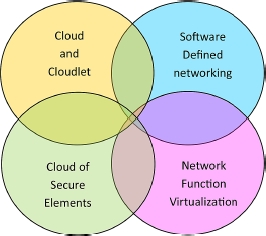Conclusion
The networks of the future will be completely virtualized in physical infrastructures – essentially datacenters of varying sizes. Very small datacenters will be located on the periphery of the network, near to the user. This physical infrastructure will be used to support software networks that are tailored to the clients’ needs and to those of the applications for which they were generated. The agility of these networks is the main differencewith previous-generation networks: it is possible to replace a network in a few minutes, or even a few seconds, and by using automation, in a few milliseconds.
However, it is important to note the difficulties that could arise from this new generation of networks: the complexity of managing the different networks and the security of the whole system. Indeed, for reasons of isolation, management cannot be shared, for fear that one network will be intermingled with another. Security is also a major issue, because of the increased complexity of the architecture and the diversity of the networks. The Cloud of security is a promising new paradigm, but it does not solve all the problems.
Overall, this new generation of technologies is based on the Cloud, and on virtualization, as is indicated by Figure C.1, which also shows the overlap with migration, NFV and Cloud of security.

Figure C.1. The fundamental elements of new generation networks ...
Get Software Networks now with the O’Reilly learning platform.
O’Reilly members experience books, live events, courses curated by job role, and more from O’Reilly and nearly 200 top publishers.

